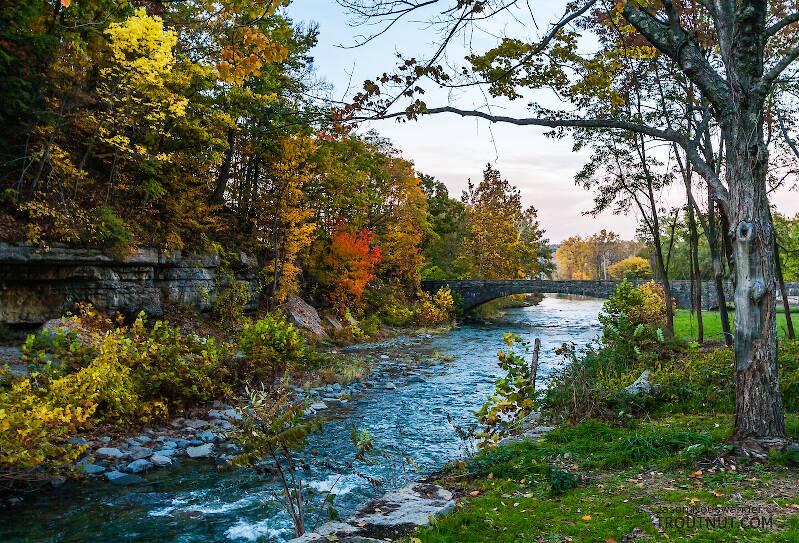
Blue-winged Olives
Baetis
Tiny Baetis mayflies are perhaps the most commonly encountered and imitated by anglers on all American trout streams due to their great abundance, widespread distribution, and trout-friendly emergence habits.


Mayfly Species Heptagenia julia
Where & when
In 1 records from GBIF, adults of this species have been collected during July (100%).
Species Range
Physical description
Most physical descriptions on Troutnut are direct or slightly edited quotes from the original scientific sources describing or updating the species, although there may be errors in copying them to this website. Such descriptions aren't always definitive, because species often turn out to be more variable than the original describers observed. In some cases, only a single specimen was described! However, they are useful starting points.
Male Spinner
Wing length: 7.5-8.5 mm
Allied to H. pulla (now a synonym of Ecdyurus pullus), but smaller; mesonotum reddish brown; tergites 2 to 7 pale yellowish, with a median purplish brown band; genitalia of the pulla type.
Head pale yellowish; vertex tinged with reddish brown; narrow black line on face at corner of eye, below level of antenna base; antennae yellowish brown; ocelli with black bases. Pronotum light reddish brown, shaded with blackish brown in median area, especially on posterior margin; mesonotum dark reddish brown, scutellum very dark; metanotum similar. A conspicuous round black spot above fore coxa; black longitudinal streak on pleura above bases of legs, more or less discontinuous so as to form several oblique and some horizontal dark lines. Pleura light red-brown; sternum yellowish, posterior portion of mesosternum rather darker. Fore leg dusky; femur with indistinct median purplish band, purplish brown at apex; black streak distally on ventral margin. Tibia purplish brown at apex; tarsal joinings dark. Femora of middle and hind legs yellowish with faint dusky tinge, narrowly dark apically; tibiae and tarsi dusky. Middle coxa with one dark spot; usually two on hind coxa. Basal joint of fore tarsus about 1/4 of second; of hind leg, distinctly shorter than second joint. Wings semi-hyaline, stigmatic area cloudy; costa, subcosta and radius yellowish, all other veins light brown; 4 to 5 costal cross veins basally, about 10 beyond bulla.
Abdominal segments 1-7 pale yellowish, semi-hyaline; 8-10 yellowish red, opaque. Posterior margins of tergites narrowly purplish black. A wide median purplish brown band on tergites 1-4, wider posteriorly on each tergite; on 5-7 the median band is present but narrower, confined to area each side of median line. Within this dark band are lunate submedian paler streaks; occasionally traces of a pale mid-dorsal line on anterior margins. A faint black line marks the stigmatic area, on each segment. Sternites unmarked.
Genitalia very similar to H. pulla, with penes differing slightly in detail from that species, the apical projections being more acute, and the two median pairs of spines almost alike in size and shape. Tails dusky at base, becoming pale yellowish brown distally; in some specimens almost wholly pale; joinings distinctly dull purplish, alternately wide and narrow in basal area.
Start a Discussion of Heptagenia julia
References
- Needham, James G., Jay R. Traver, and Yin-Chi Hsu. 1935. The Biology of Mayflies. Comstock Publishing Company, Inc.
Mayfly Species Heptagenia julia
Species Range
Resources
- NatureServe
- Integrated Taxonomic Information System
- Global Biodiversity Information Facility
- Described by Traver (1933)

